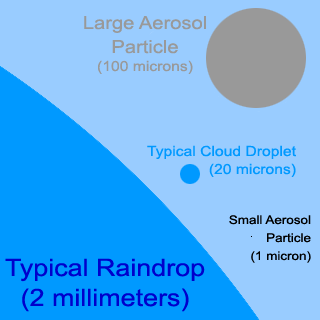Particulate Matter
Goal
Students learn about the sources and impacts of particulate matter (PM) or aerosols in relation air quality and human impacts.
Engage students about the science of particulate matter (PM) air pollution through fact-finding.

- Aerosol Sky Condition Poster Activity: A NASA classroom-based activity that introduces students to the concept of how aerosol (particulate) levels in the atmosphere affect sky conditions.
- Aerosols: Tiny Particulates in the Air: This short introduction to particulate matter is accessible for younger students.
- Particulate Matter Basics: The US Environmental Protection Agency’s comprehensive primer on particulate matter air pollution. This resource may work best for more advanced students and in the context of searching for answers to specific questions about particulate matter.
Explore by investigating indoor and outdoor activities that identify and measure PM air pollution.
- Particulate Matter: For Your Eyes Only: students develop their understanding of visible air pollutants with an incomplete combustion demonstration, a "smog in a jar" demonstration, and by building simple particulate matter collectors.
- Observing Visibility and Sky Color: An atmosphere observing activity from The GLOBE Program for students to observe, document, and classify changes in visibility and sky color over time and to understand the relationship between the changes in visibility and sky color due to particulate matter suspended in the air.
- Aerosols Protocols: The GLOBE Program’s protocol for students to use a sun photometer to measure how much sunshine is scattered or absorbed by particulate matter.
- Every Breath You Take: In this activity from National Jewish Health, students collect particulate matter in Petri dishes over a week and explore the relationship between air quality and health.
Evaluate student learning with student reports comparing the amount of PM in different locations.
- How Clean is Your Air?: In this two-part experiment (described on pages 6-9), students conduct an investigation of the amount of particulate matter found in and around their school environment. Students summarize data and results and draw conclusions through a worksheet and graphing exercise. A rubric is provided. Have students hypothesize reasons for different quantities of particulate matter in different locations and suggest how levels of particulate matter could be reduced.
- I breathe WHAT??: Students capture and examine air particles to gain an appreciation of how much dust, pollen, and other particulate matter is present in the air around them. Students place "pollution detectors" at various locations to determine which places have a lot of particles in the air and which places do not have as many. Quantifying and describing these particles is a first step towards engineering methods of removing contaminants from the air. This engineering curriculum aligns with Next Generation Science Standards (NGSS).
Grade Level
- Middle School
- High School
Educational Standards
Next Generation Science Standards
- SEP: Constructing Explanations and Designing Solutions
- DCI: MS-ESS3.C: Human Impacts in Earth Systems
- CC: Cause and Effect, Influence of Science, Engineering, and Technology on Society and the Natural World
- PE: MS-ESS3-3 Apply scientific principles to design an experiment for monitoring and minimizing a human impact on the environment.
Common Core State Standards
- Math.Content.7.SP.A.2 Use data from a random sample to draw inferences about a population.
- Math.Content.5.MD.B.2. Represent and interpret data.